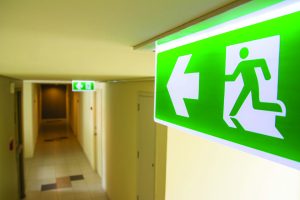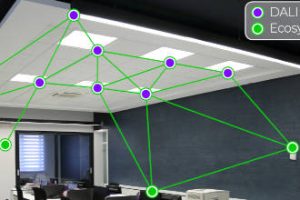When there’s an emergency in a building occupants need to be able to see their surroundings and escape from danger. Sudden darkness puts them at risk of injury from an accident and can trigger panic.
If the main power supply fails and the lights go out, perhaps due to a power cut or a fire, having an emergency lighting system powered by batteries or a back-up generator that will leap into action automatically is highly advantageous. Emergency lighting would typically be used to light an escape route, or to provide enough light elsewhere to enable occupants to find and reach this route.
Around the world, legislation sets requirements for lighting needs in different types of buildings and areas.
In the UK, for example, the BS 5266-1 standard defines the emergency lighting needed in most public buildings, including location, brightness and timescales for regular servicing and testing.
As well as the legal requirements for safety, lighting system designers have an opportunity to select emergency lights that make a big impact on the buildings in which they are installed. Making the right choices can improve efficiency and reduce maintenance. Emergency lighting is big business, with a global market valued at $5.48bn in 2020, according to Allied Market Research.
There are some points that designers should consider for emergency lighting. The Digital Addressable Lighting Interface (DALI) protocol in particular helps lighting manufacturers and system designers with control and communication between components in the lighting system.
DALI for emergency lighting
The internationally standardised DALI protocol, managed by the DALI Alliance, enables digital control of lighting systems. For emergency lighting, DALI Emergency is robust and reliable, enabling one system to control both regular illumination and emergency lighting.
Recently the DALI Alliance has extended its DALI-2 certification programme to include control gear for self-contained emergency lighting (where the battery is inside, or next to, the luminaire).
DALI-2 certification enables manufacturers to ensure their products will be interoperable with those from other suppliers. This means that lighting designers and specifiers are not locked into one vendor and can choose the best certified product from any provider.
As well as extending interoperability, DALI-2 Emergency facilitates integration with building management systems, which can access DALI control and querying capabilities including automated testing and reporting.
DALI-2 Emergency also includes useful features for emergency lighting systems. For example, the ‘emergency time’ or ‘rated duration’ is the time the lamp operates on the battery during a mains supply failure. This can be up to 8.5 hours and is determined by the choice of control gear and battery. Typical rated durations are one, two or three hours.
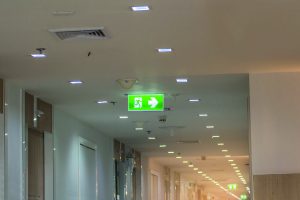 Another feature is ‘prolong time’ – the time the control gear will continue to operate the lamp from the battery after the normal (mains) supply has been restored. This can be up to two hours.
Another feature is ‘prolong time’ – the time the control gear will continue to operate the lamp from the battery after the normal (mains) supply has been restored. This can be up to two hours.
For a product to be certified as compliant with DALI-2 Emergency, it must pass a rigorous and comprehensive set of tests developed by the DALI Alliance, which is based on Part 202 of the global IEC 62386 standard. The DALI Alliance independently verifies the test results and lists each certified product in an online product database on its website. Compared to the earlier DALI test requirements, the level of testing for DALI-2 has increased dramatically.
Looking ahead, the ongoing development of ‘DALI+ with Thread’ certification opens the possibility of future standardisation for wireless control of DALI emergency lighting.
Emergency lighting types
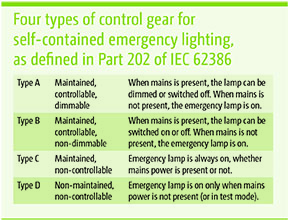 As defined in Part 202 of IEC 62386, control gear for self-contained emergency lighting must correspond to one of four types (A, B, C or D). Fundamentally, they all share one common factor: when the mains power goes off, the emergency lighting must be on.
As defined in Part 202 of IEC 62386, control gear for self-contained emergency lighting must correspond to one of four types (A, B, C or D). Fundamentally, they all share one common factor: when the mains power goes off, the emergency lighting must be on.
Types A and B are often used for both general lighting and emergency lighting, due to their capability to control the lamp when the mains power is present. All types have the capability to execute function and duration tests.
Maintenance and testing
Thankfully, emergencies in most buildings are very rare. This means that emergency lighting often sits dormant for prolonged periods of time. As a result, it is essential to undertake regular maintenance and testing to ensure the lighting will operate reliably when needed. This is a legal requirement in many countries.
To make testing simpler, and to ensure regular tests are not forgotten or missed due to human error, DALI enables self-contained emergency tests to be automated, and triggered by DALI commands or by an optional timer. The control system stores the results of the tests, so they can be reviewed in future if required, or automatically emailed to a facilities manager.
DALI emergency control gear allows function tests and duration tests. The first is a quick test of the battery, charging circuit, driver or relay and lamp. This can take between a few seconds and one minute and is simply to check everything works.
The duration test checks that the battery will be able to operate the lamp for the full rated time, usually between one hour and three hours. If the battery fully discharges before the rated duration has been reached, then it fails the test.
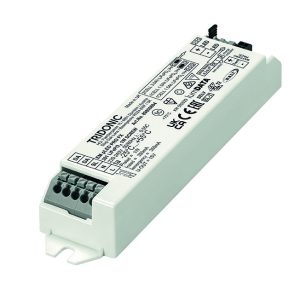 DALI emergency control systems support the requirements of IEC 62034:2012, the standard for automatic test systems for battery-powered emergency escape lighting. This mandates a monthly function test as well as an annual full-rated duration test. Different countries and regions may set different timescales for these regular tests.
DALI emergency control systems support the requirements of IEC 62034:2012, the standard for automatic test systems for battery-powered emergency escape lighting. This mandates a monthly function test as well as an annual full-rated duration test. Different countries and regions may set different timescales for these regular tests.
Devices that comply with DALI-2 Emergency include lamp operating timers. These time the use of lamps in both normal operation (mains supply present) and during emergency operation (battery supply), helping to ensure the system will not fail due to lamps that have reached the end of their specified lifetime. The data from the lamp counters is used by the system to determine when a lamp needs replacing, and to alert the operator that maintenance is required.
DALI-2 Emergency sets a new standard for the testing and verification of emergency lighting systems, offering seamless interoperability of safety-critical lighting systems.
 Electronics Weekly Electronics Design & Components Tech News
Electronics Weekly Electronics Design & Components Tech News
